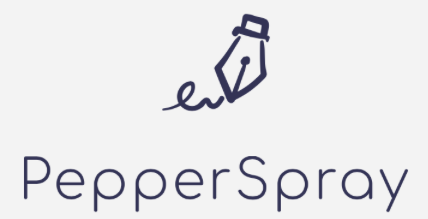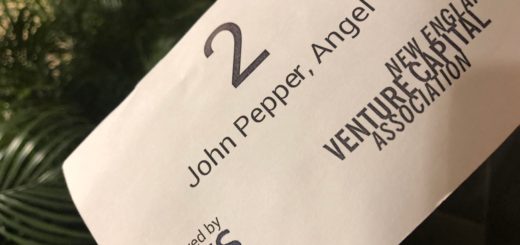Fixing the Restaurant RRF Grants
Soon after the pandemic began, the federal government provided temporary relief to small businesses in the form of the Paycheck Protection Program loans – the so-called PPP money. The PPP dollars saved countless small businesses from immediate and permanent demise both in April 2020 (round 1) and later in January 2021 (round 2). Typically these PPP loans were forgiven, so in essence they were grants.
In the spring of 2021, Congress created another grant program for restaurants totaling nearly $30 billion — this one was called the Restaurant Revitalization Fund – or the RRF. And it turned out this was the big one.
The application process was extremely cumbersome. Across the country, individuals and small teams of people scrambled to be ready to hit “submit” at exactly the right moment. I was lucky to have Patty on the Streetlight Ventures team – our operating partners – do the detail work. All I had to do was be ready at precisely 11:50am on May 3, 2021 to do the final inputs and hit submit as close to 12 noon ET as possible – the time when the SBA application process officially went live.
Try to imagine thousands and thousands of restaurant owners across the country staring at their computer screens all at once as the clock hands pointed directly up on that May Monday morning. Well, most of us in the industry don’t have to imagine – we remember it well. We were all there. The first-come, first-served approval structure forced this insane dynamic. The whole thing reminded me of the beginning of the orange crop scene in Trading Places.
By 12:10pm, we had successfully submitted applications for both Boloco entities. One entity owns and operates our single Boloco unit in Hanover, NH and the other entity owns and operates the 5 Boloco units remaining in Boston – they are legally two separate companies so they each apply separately.
Here was the problem. The way the formulas worked, restaurant in the US applied for over $75B in grants, nearly three times the authorized $28.6B that Congress had made available. It was pretty obvious that most operators – and perhaps more importantly their employees – were going to be left behind.
A couple of weeks after the deadline, the SBA sent out the following message:
The Restaurant Revitalization Fund has received more than 147,000 applications… requesting a total of $29 billion in relief funds. To date, a total of $2.7 billion of relief funds have been distributed to 21,000 restaurants since the Restaurant Revitalization Fund opened on May 3, 2021.
To anyone who had been paying attention, that meant it was already over. The funds had been exhausted.
For me, personally, I wasn’t super upset by any of it. I was honestly surprised the RRF had ever come to be at all, just as I had been surprised by the creation of both PPP programs. I thought the pandemic was going to be a sure end to our 24-year old business as it would be for so many others. We had even prepared for our last day of business for all Boston restaurants to take place on August 28, 2020. A few days before, with advice from counsel, concessions from landlords, and rumors of a second round of PPP coming in late 2020, which eventually did come in January 2021, we decided to keep hobbling forward. So far, anyway, we have lived to tell the tale.
So when the RRF was fully exhausted, I wasn’t surprised. After all, the formulas were guaranteed it would run way short. The process required applicants to submit revenue figures and the like, and it generated a dollar amount that you were then applying for.
Check this out… for our two entities:
- Boloco Hanover (1 unit) – $275,000
- Boloco Boston (5 units) – $5.4 million
These aren’t just big dollars for a business our size – they are massive. Some of Hanover’s best years saw profits of $275,000 in an entire year… and never ever have the Boston units put together anything close to $5 million in profits per year. The formulas were desperately wrong. And yet that’s how everyone in the industry submitted.
You can imagine my surprise, therefore, when the status of our Boloco Hanover application changed to “In Review” on May 24, 2021.
A few days later, the full dollar amount for our single NH unit magically dropped into that entity’s bank account. A year’s worth of profits – what usually takes 365 days of blood, sweat and tears in a non-pandemic setting – appeared in seconds.
Days passed. Based on what had just taken place in NH we were optimistic that MA was soon to follow. We waited. Nothing. And sadly, our Boston restaurants needed the funds far more desperately than the Hanover entity did. But Hanover got the money, and Boston didn’t. We never heard a thing. You don’t get a rejection letter or anything like that. Just silence.
It reminded me of freshman spring back in college when I was rushing a fraternity and we all sat in our dorm rooms all day to wait for a knock on the door from the upperclassmen who had decided our fate the night before. My roommate and I had rushed one of the same fraternities. When the first knock came, it was for me. They had dung me… rejected. I was bummed. But not more than a few minutes later, another knock came and the same guys came barging in laughing about how it was a hoax and I was accepted. I was thrilled. Later, the same guys knocked again for my roommate. They dung him too. They never came back. Never said a word. When I left to go join the acceptance “festivities” later that night, I remember seeing my roommate sitting on his bed waiting for that door to knock. The knock never came. The cruel games we played on people in college were bad enough – but in the case of the RRF, we were playing with people’s lives.
Within days of the official closing of the RRF, organizations started pushing hard for more. The Independent Restaurant Coalition wrote on June 10, 2021:
The Restaurant Revitalization Fund (RRF) was a great start but nowhere near enough to provide the assistance needed for the thousands of applicants that are desperately trying to survive. To give you an idea of where it stands right now, on May 24, over 362,000 applicants requested approximately $75 billion in funding. Unfortunately the fund only had $28.6 billion in it to disperse.
Chris Coombs of Boston Urban Hospitality wrote a compelling article just last month on the inadvertent creation of haves and have nots due to the flawed approval process of the RRF grants.
He wrote:
Congress must act urgently to replenish the program to provide relief for those of us still hurting. For restaurants that applied, it was all or nothing — some got funding in full (as they should have, and I am happy for them) while the application from the restaurant down the street sits in limbo.
The competitive advantage this created cannot be overstated. Not only were some restaurants left out in the cold, they were actually harmed by the program because of how hard it is to compete under those circumstances. It’s no longer a level playing field. Restaurants that received RRF funds can afford to pay higher wages and charge less for food and drinks. Congress created winners and losers; RRF replenishment will help everyone to be equitable.
Chris is right. First, he’s right to be happy that others did receive funds, especially those traditionally disadvantaged owners who are typically left behind in processes such as these. Second, he’s right to call out the fact that the winners are winning big (as is our restaurant in Hanover, NH that received the RRF) and the losers are losing it all (as are our restaurants in Boston that received nothing).
Had the SBA chosen to accept and assess all of the applications and perhaps split the $29B across all applicants instead of doling it out first-come, first-served, it still would have been a significant amount of money to help all restaurants and help them endure this ongoing crisis. If Boloco Hanover had received 1/3 of what it actually applied for, for example, and the same had held true for all other grant recipients, those currently left in the cold could have all participated. Would it have been enough? For the 5 Boloco units in Boston most definitely – at least through 2022 as things are looking right now.
Now the only hope is to replenish the RRF and try to get it right a second time. The problem is that many of us agree that too much tax-payer money has already been given out, even if we weren’t on the receiving end. Critics of these programs say that restaurants should simply go away if they can’t make it without government funding – and I don’t disagree in many cases. If our time in Boston is up at Boloco, I’m ready to call it. I personally don’t feel cheated. I’m not upset about it. But then again, Boloco isn’t any longer the source of most of my income. For other owners in this industry, their restaurants are. And for that reason, the process should be fair.
Finally, and this needs to be highlighted, there was a lot of debate, and litigation, because the first three weeks of approvals were originally supposed to go only to “women, veterans, and socially and economically disadvantaged business owners“. In part, this was to offset the advantages people like me had experienced in applying for the PPP where approvals had a lot to do with your long-term banking relationships. And while its true that most of us who applied as owners are not disadvantaged, most of our employees are. This grant program shouldn’t be just about owners… it should be about the millions of workers who rely on those owners – whoever they might be – to provide them jobs that pay well and help them lead better lives. The ramifications of this have/have not dynamic do not stop at the owner level… and that’s tragic. Equal treatment across the ranks of hard-working hourly workers might have been considered more carefully.
The only way to make it fair at this point is to replenish the funds. Some are calling for up to $60B in additional funds to make sure everyone gets the funding they applied for. But honestly – if our amount of $5M+ is representative of others, and I know it is – then we should drop that number significantly and approve restaurants for less. Every dollar helps in this business during good times, so whatever we do end up with will make a world of difference – whether it be 25% or even 50% less than originally expected.
As Chris Coombs says, “Let’s get the entire restaurant industry back on its feet.” 💪🏼




Recent Comments